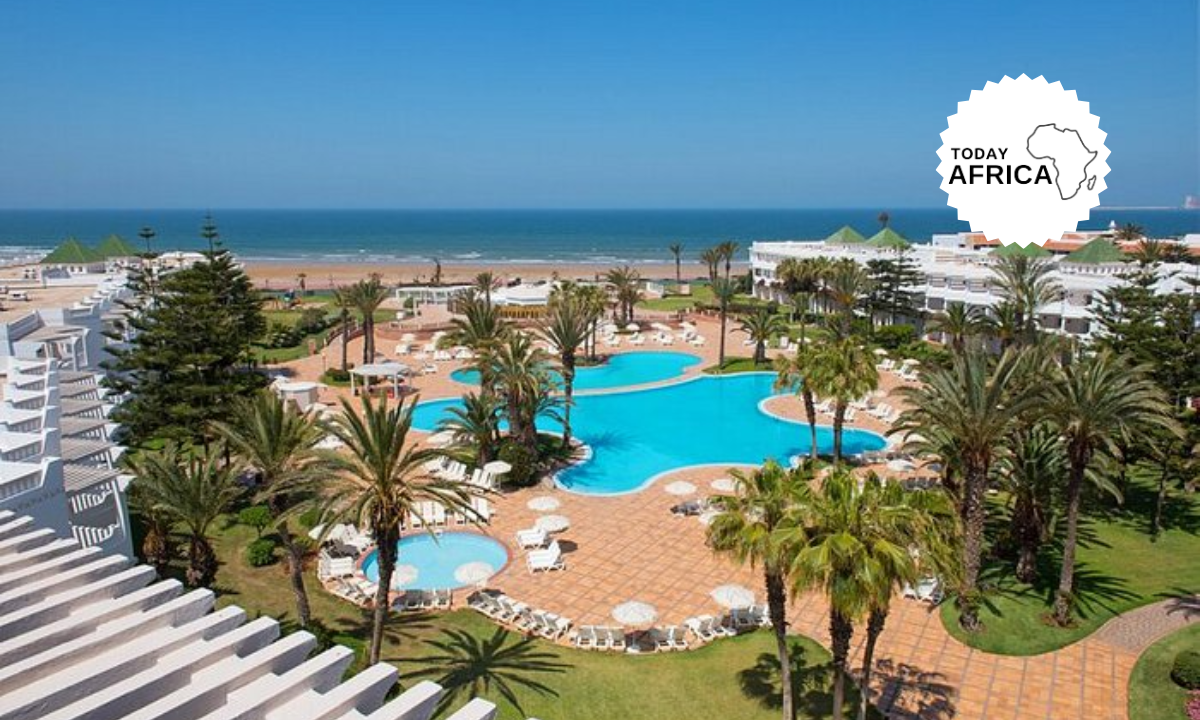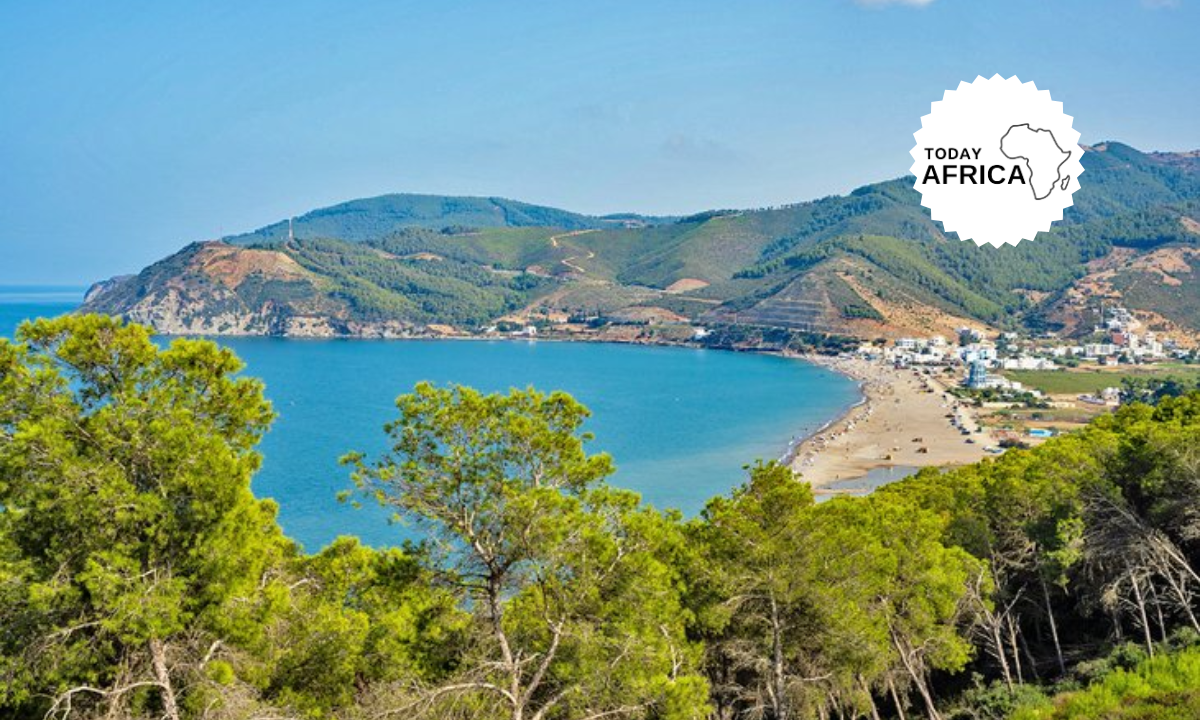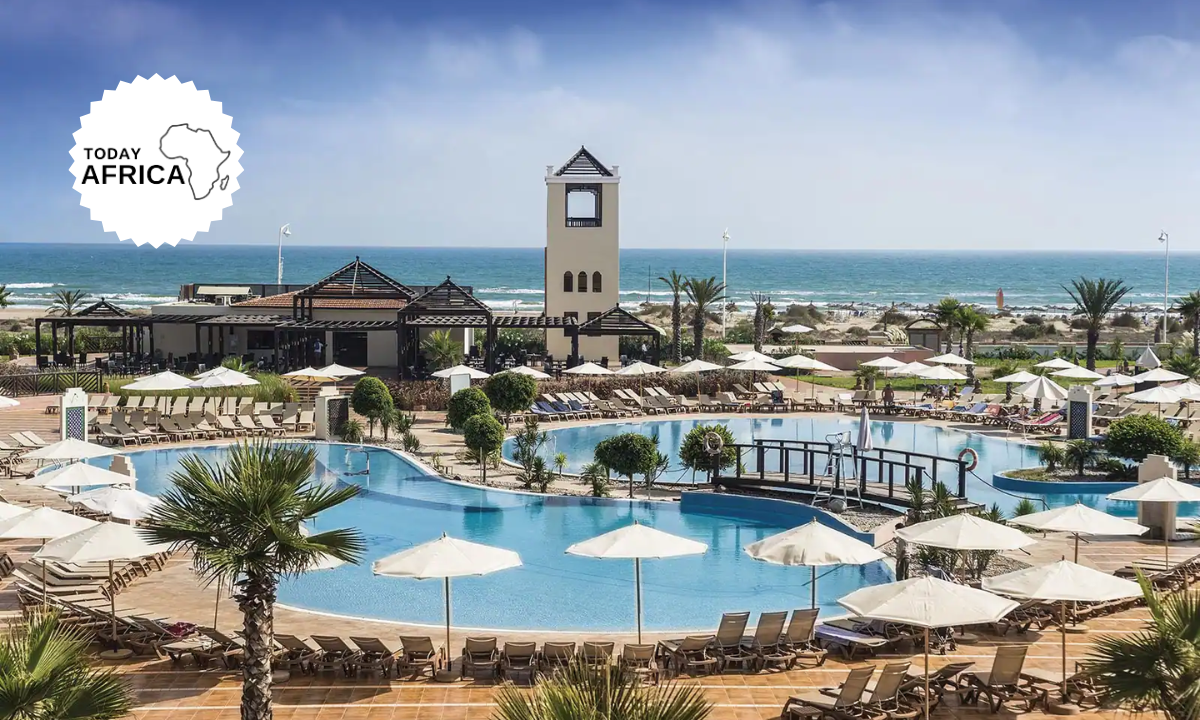Wondering things to do in Sierra Leone? There are countless places of interest in this West African country. Aside from several popular tourist attractions, there are many places to visit. To get you started, below are some of the best places to visit and things to do in Sierra Leone.
Things to Know About Sierra Leone
Sierra Leone, country of western Africa. The country owes its name to the 15th-century Portuguese explorer Pedro de Sintra, the first European to sight and map Freetown harbour.
The original Portuguese name, Serra Lyoa (“Lion Mountains”), referred to the range of hills that surrounds the harbour. The capital, Freetown, commands one of the world’s largest natural harbours.
Although most of the population is engaged in subsistence agriculture, Sierra Leone is also a mining centre. Its land yields diamonds, gold, bauxite, and rutile (titanium dioxide).
Internal conflict crippled the country from the late 1980s onward, culminating in a brutal civil war that took place from 1991 to 2002. Since the end of the war, the government of Sierra Leone has undergone the arduous task of rebuilding the country’s physical and social infrastructure while fostering reconciliation.
Best Time to Visit Sierra Leone
The best time to go to Sierra Leone is in the dry season, which runs from October to May. January and February tend to be the hottest months. Birders will find December or January most rewarding. Travel is possible in June and late September although there will be heavy down pours and rural roads can become very muddy.
To make your travel convenient and seamlessly connected, make sure you get a good eSIM package that works in your travel destination. MobiMatter is the ultimate eSIM marketplace that sells more than 700+ eSIMs across more than 190 countries! Check out this massive variety of eSIM packages just for Africa.
Travel Tips for Sierra Leone
Here are some travel tips for visiting Sierra Leone:
- Get vaccinated: Make sure you have all the necessary vaccinations before traveling to Sierra Leone, including yellow fever, hepatitis A and B, and typhoid. You may also need to take antimalarial medication.
- Dress appropriately: Sierra Leone is a conservative country, and visitors should dress modestly, particularly in religious sites or when visiting rural areas. It is also worth noting that Sierra Leone can be hot and humid, so lightweight and breathable clothing is recommended.
- Be prepared for the weather: Sierra Leone has a tropical climate, with two distinct seasons – the dry season (November to April) and the wet season (May to October). Visitors should pack accordingly, taking into account the season and expected weather conditions.
- Use reputable transportation services: When traveling around Sierra Leone, it is best to use reputable transportation services, such as registered taxis and buses. Avoid unlicensed or unofficial taxis, as these can be unsafe.
- Respect local customs and traditions: Sierra Leone has a rich culture and traditions, and visitors should be respectful of local customs and practices. This includes dressing modestly, being mindful of local sensitivities, and asking for permission before taking photos.
- Carry cash: While credit cards are accepted in some places, it is best to carry cash, particularly in rural areas. ATMs are available in major cities, but it is worth noting that these can sometimes be unreliable.
- Be cautious with food and water: Tap water in Sierra Leone is not safe to drink, so it is important to only drink bottled or filtered water. Visitors should also be cautious about consuming raw or undercooked food, particularly from street vendors.
Regions of Sierra Leone & its Highlights
Sierra Leone is a country with diverse landscapes and cultural attractions. Here are the main regions worth visiting and their highlights:
Freetown
- The capital city and the cultural and economic hub of Sierra Leone.
- Visit the Cotton Tree, a historic symbol of Freetown.
- Relax on Lumley Beach, one of the most popular beaches in the city.
- Explore the bustling markets like the Big Market or the Waterside Market.
- Learn about Sierra Leone’s history at the National Museum.
Western Area Peninsula
- Offers stunning beaches and beautiful landscapes.
- Visit the Tacugama Chimpanzee Sanctuary to see rescued chimpanzees.
- Enjoy the pristine beaches of Tokeh, Bureh, and River Number Two.
- Take a boat trip to Banana Islands for snorkeling and diving opportunities.
- Hike through the rainforest to reach the historic Bunce Island, a former slave trading post.
Northern Province
- Known for its lush greenery, mountains, and rich cultural heritage.
- Explore the historic city of Makeni and its bustling markets.
- Visit the Outamba-Kilimi National Park for wildlife viewing, including elephants, hippos, and chimpanzees.
- Trek to the top of Mount Bintumani, the highest peak in Sierra Leone.
- Discover the traditional Temne culture in the villages around the region.
Eastern Province
- Offers diverse landscapes including rainforests, rivers, and savannahs.
- Explore the Tiwai Island Wildlife Sanctuary, home to rare primates and birds.
- Visit the bustling town of Kenema known for its lively markets.
- Discover the traditional Mende culture in villages like Blama and Kailahun.
- Take a boat trip on the Moa River and explore the remote villages along its banks.
Southern Province
- Known for its beautiful beaches, islands, and rich cultural heritage.
- Relax on the pristine beaches of Turtle Islands and the Banana Islands.
- Explore the colonial architecture and history of Bonthe, a historic port town.
- Visit the Turtle Islands Marine Park for snorkeling and diving.
- Experience the vibrant culture of the Sherbro people in villages like Shenge and Pujehun.
What to See and Do in Sierra Leone
Sierra Leone is a beautiful and diverse country with a rich history and culture. Here are some of the best things to see and do when visiting Sierra Leone:
- Visit the beaches: Sierra Leone is home to some of the most beautiful beaches in West Africa, such as Lumley Beach and Aberdeen Beach in Freetown, Tokeh Beach in the Western Area Peninsula National Park, and River No. 2 Beach in the Turtle Islands.
- Explore Freetown: Sierra Leone’s capital city has a rich cultural heritage and a mix of modern and colonial architecture. Highlights include the National Museum, the historic Cotton Tree, the bustling markets, and the vibrant nightlife.
- Go on a wildlife safari: Sierra Leone is home to a range of wildlife, including primates, elephants, and rare bird species. National parks such as the Western Area Peninsula National Park, Gola Rainforest National Park, and Outamba-Kilimi National Park are great places to go on a wildlife safari.
- Learn about the country’s history: Sierra Leone has a rich and complex history, from its colonial past to its role in the transatlantic slave trade. Visitors can learn about this history by visiting sites such as Bunce Island, the Tacugama Chimpanzee Sanctuary, and the Sierra Leone Peace Museum.
- Enjoy the local cuisine: Sierra Leonean cuisine is diverse and delicious, with a mix of West African and colonial influences. Some local specialties to try include cassava leaves, groundnut soup, and jollof rice.
- Go trekking or hiking: Sierra Leone has a range of stunning landscapes, from rainforests to mountains, that are perfect for trekking or hiking. Some popular trekking routes include the Loma Mountains, the Tingi Hills, and the Kangari Hills.
What to Eat in Sierra Leone
Sierra Leonean cuisine is diverse and delicious, with a mix of West African and colonial influences. Here are some local dishes to try when visiting Sierra Leone:
1. Fufu
Besides rice, fufu is a very common accompaniment of saucy foods and stews. It’s a gelatinous mixture made with pounded starchy vegetables such as plantain, cassava and yams.
The pounded vegetables are covered with hot water and left to ferment for several days, then they are ground into a soft and gelatinous dough, which can be rolled up into a ball and used to scoop up sauces.
Due to the fermentation process, fufu has a slightly acidic flavour which goes very well with strong-flavoured dishes such as cassava leaf stew and groundnut soup.
2. Cassava leaf stew
This flavourful stew is made with cassava leaves as a base, but around Sierra Leone you may also encounter a variation made with potato leaves. The stew also includes beef or chicken, salted fish or prawns, and even a combination of two or more proteins.
It is made by cooking the meat or seafood in water, and reserving the broth obtained to use as a base for the stew. Seasonings and palm oil are added to the cassava leaves, and the meat is also added and cooked some more.
3. Yebeh
Yebeh is a stew made with starchy, carbohydrate-rich vegetables like potatoes, plantain, cassava and yams. These vegetables are boiled to soften them, and then they are cooked with hot peppers and palm oil, another ingredient very frequently used in Sierra Leonean cuisine.
Meat and fish are also added, and the starchy vegetables are cooked for a long time until they naturally become mushy and thicken the sauce.
4. Groundnut soup
In Sierra Leone, peanuts are known as groundnuts, and they are a very common crop. Groundnut soup is actually a meat and vegetable stew, cooked in a thick peanut sauce.
It usually includes beef and chicken, as well as a variety of vegetables slowly braised in the sauce, which can be made with peanut butter or ground peanuts. The finished dish has an orange hue to the addition of palm oil, which is usually bright red.
5. Falafel
All Sierra Leonean dishes described so far are similar to those you may have encountered in other West African countries, but falafel are more commonly found in North Africa and the Middle East.
In Sierra Leone, especially Freetown, Lebanese cuisine is very popular – it is estimated that over 100,000 people of Lebanese heritage currently live in the country, and many are involved in the hospitality industry.
For this reason, it’s common to find dishes like hummus, falafel and shish tawook on menus around Freetown, especially in upscale restaurants. The dishes are usually delicious, and if you close your eyes you might think for a moment you’re in Beirut!
6. Bissap
Bissap is a drink made with brewed hibiscus flowers, with the addition of flavourings like sugar, vanilla, lemon, ginger or even orange blossom water. The result is sweet and aromatic, and it’s also found as an ingredient for cocktails in Freetown’s swankiest bars.
7. Tombe juice
Tombe juice is made with sour tamarind pulp, often flavoured with cinnamon, sugar and honey. You can buy it already mixed, or purchase tamarind paste and mix it with water and flavourings according to your tastes – some people even like to add a pinch of cayenne pepper to make it a little spicy.
8. Palm wine
Palm wine, also known as poyo, obtained from the fermented sap of coconut palms. The alcohol content depends on length of fermentation – when the coconut sap is freshly tapped, it’s quite light and refreshing, but the longer it’s left, the more alcoholic it becomes. Make sure you drink responsibly or you may be left with a terrible headache!
13 Things to Do In Sierra Leone
Although Sierra Leone is a relatively small country, it’s full of amazing sites, including stunning beaches, rare wildlife, the highest mountain on the West African coast, and breathtaking scenery.
There is plenty to keep you busy while you’re exploring the country!
1. Visit the Tacugama Chimpanzee Sanctuary
The number one attraction is the Tacugama Chimpanzee Sanctuary. It has always been one of the main things to do in Sierra Leone, and I absolutely love visiting this place.
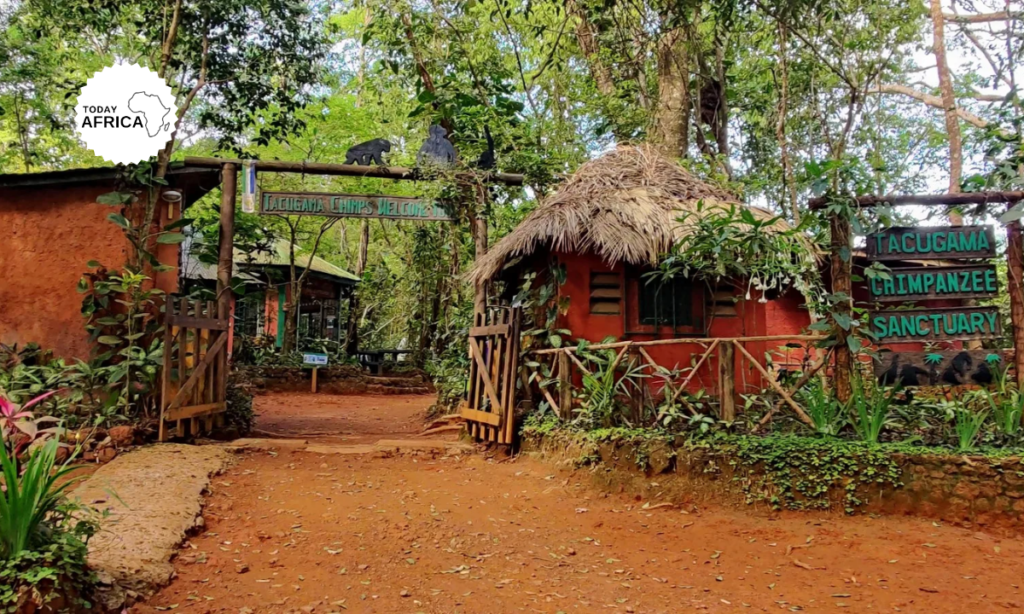
The Tacugama Sanctuary cares for over 120 rescued chimpanzees and opens its doors every day to tourists and locals alike who want to learn more about the animals through a guided sanctuary tour.
The sanctuary also runs an outreach programme that aims to educate the public, raise awareness, and provide jobs, as well as numerous events and activities to raise funds.
Today Africa recommend staying overnight at the sanctuary in one of their Eco Lodges. It’s an immersive forest experience; there are also a number of hiking treks you can sign up for, but make sure you attend the 10:30 am sanctuary tour to see the chimps at their most active.
2. Spend a weekend on Banana Island
There is no way you can visit Sierra Leone and not visit the Banana Islands! They are another one of the Country’s top attractions, and they will leave you feeling relaxed and refreshed.
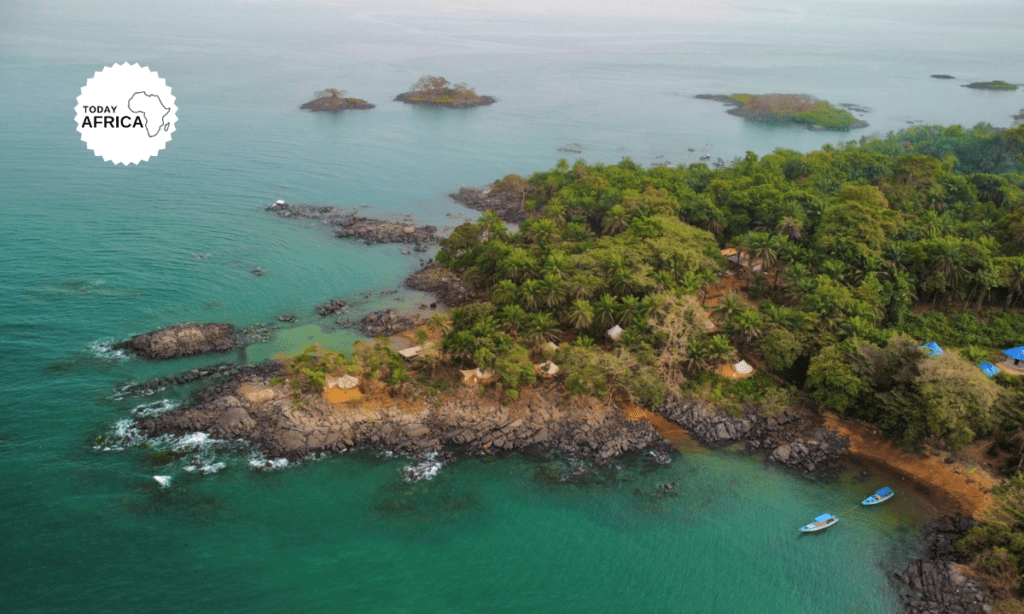
The Banana Islands are a group of three islands just off the southern tip of the western area of the Peninsula (about an hour’s drive from Freetown). They are perfect for watersports.
The largest island is Banana Island, which gives the group its namesake, and you’ll stay on this island. I suggest at least two nights at Dalton’s Banana Guesthouse (a budget-friendly accommodation, a bar and a private beach), although it doesn’t necessarily have to be over the weekend.
What we loved most about this place was its tranquillity. There are no cars on the island and no roads; you can access it via a boat from Kent Beach. I’ve written a fully comprehensive guide on how to visit the Banana Islands here.
Depending on your preferences, head to the Banana Islands on the weekend for a more upbeat vibe or during the week for a more peaceful retreat. Both options will still be chill, though.
3. Head to River No.2 beach
River No.2 Beach gets its name from the No.2 River, which runs through the beach into the ocean. At this meeting, a lagoon forms, cutting the beach in half. This means one side of the beach is much quieter than the other.
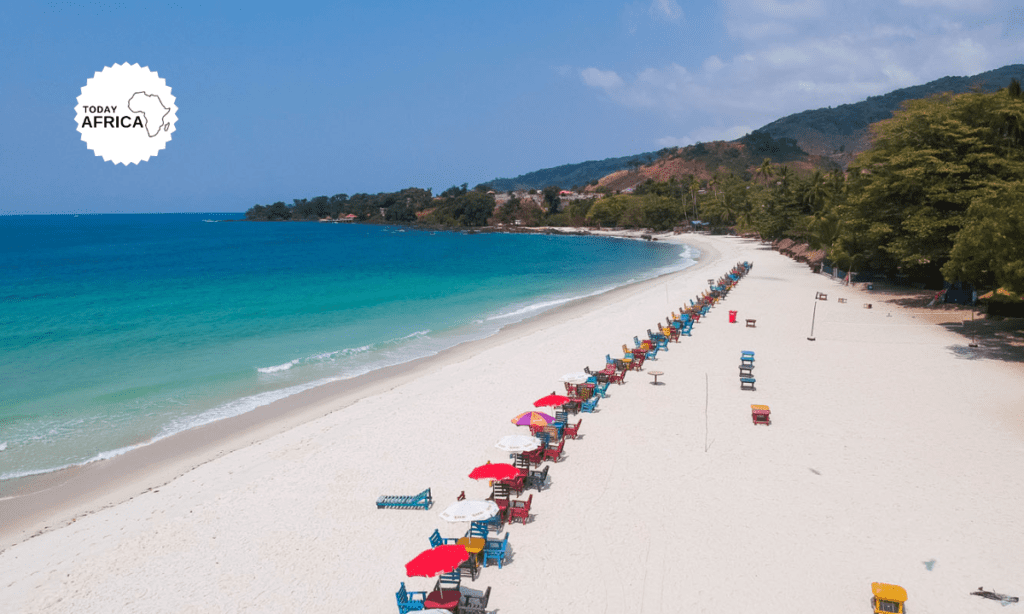
It’s one of my favourite beaches in the world, although it is very busy on the weekends when many locals, expats, and tourists enjoy their days off. You can expect fluffy white sand, turquoise waters, and breathtaking scenery.
See Also: Top 10 Things to do in Cotonou Benin This Year
The beach is backed by palm-fringed jungle, so it’s really stunning, especially if you take a walk northward away from the cafes and restaurants which line the beach. There’s also a small market near the car park which sells a variety of local crafts and clothing.
To cross the river, you can either swim or jump in a rickety boat. The crossing can be quite rough, and depending on the season, there is a strong current, so only swim across if you’re a strong swimmer.
4. Visit Central Freetown
No visit to Sierra Leone is complete without a visit to the centre of the capital. Freetown, named by free slaves who relocated to the peninsula after the slave trade was abolished, is a melting pot of all things Salone.
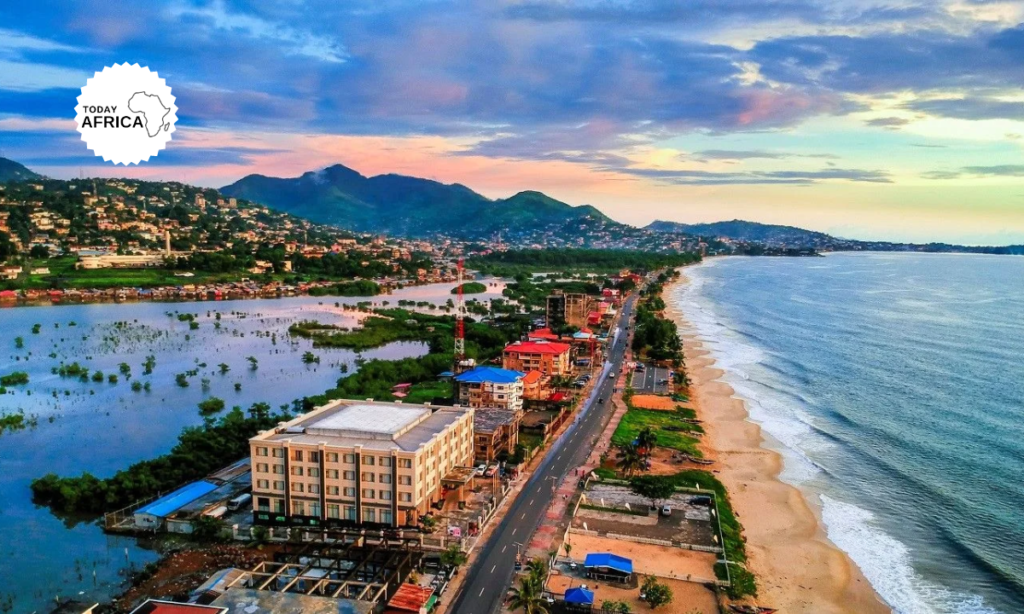
Few places to see in Freetown
The capital is the country’s centre of trade and a busy port town filled with history; there are a few sites you have to see.
- Big Market: One of the biggest markets I’ve ever witnessed can be found at the bottom of Siaka Stevens Street. Well, it encompasses many other streets as well since it’s so huge! You’ll find a selection of items from spices and fresh fruit to fabrics, jewellery, rip-off designer fashion, local crafts and household products. If you need something, you’ll find it here. You’ll need to negotiate like a pro to get a good deal. As soon as they know you’re a tourist, you’ll be given a ridiculously high rate, so be ready to barter big time!
- Sierra Leone National Museum: It’s been a while since I last visited the national museum, but I remember it being an interesting space filled with African artefacts.
- The Cotton Tree: Sierra Leone’s Cotton Tree was a symbolic landmark; however, it has recently been damaged and now sits split in half. It’s a shame, as it was a symbol of peace and freedom and has stood in the centre of Freetown for over 400 years. However, you can still visit the site.
- National Railway Museum: I have yet to visit the museum; trains really aren’t my thing. However, if you are interested in trains and the history of the British Railway in Sierra Leone, it might be worth a visit!
Click to read about the things to do in Freetown Sierra Leone
5. Go bar hopping along Lumley Beach
Another one of my favourite things to do in Sierra Leone is to head to Lumley Beach on the weekend and enjoy a lively night out.
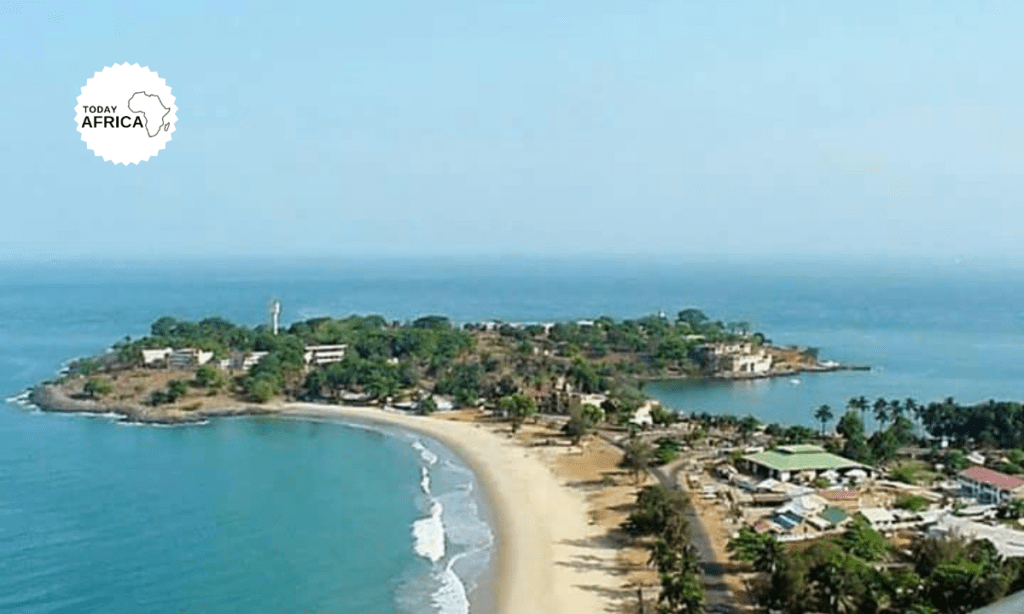
The urban beach is one of the coolest I’ve been to. It’s backed by bars, restaurants, and clubs, and it’s the place to go for evening sundowners – sunset is over the water.
It’s got a fun and upbeat atmosphere, and there is a selection of pop-up bars, from cheap, no-fuss spots to top-end establishments where you can dance the night away.
The beach is not really somewhere you’d want to go for a swim, as there is a lot of trash and stray dogs around. It gets very busy on the weekend, with plenty of activities like volleyball, football, and boot camps being held.
6. Enjoy fresh lobster at Lakka Beach
Lakka Beach is brilliant; however, it is usually missed in most people’s itineraries. It used to be quite busy, but since the road was built along the peninsula, most locals now head to River No.2 Beach, skipping this gem.
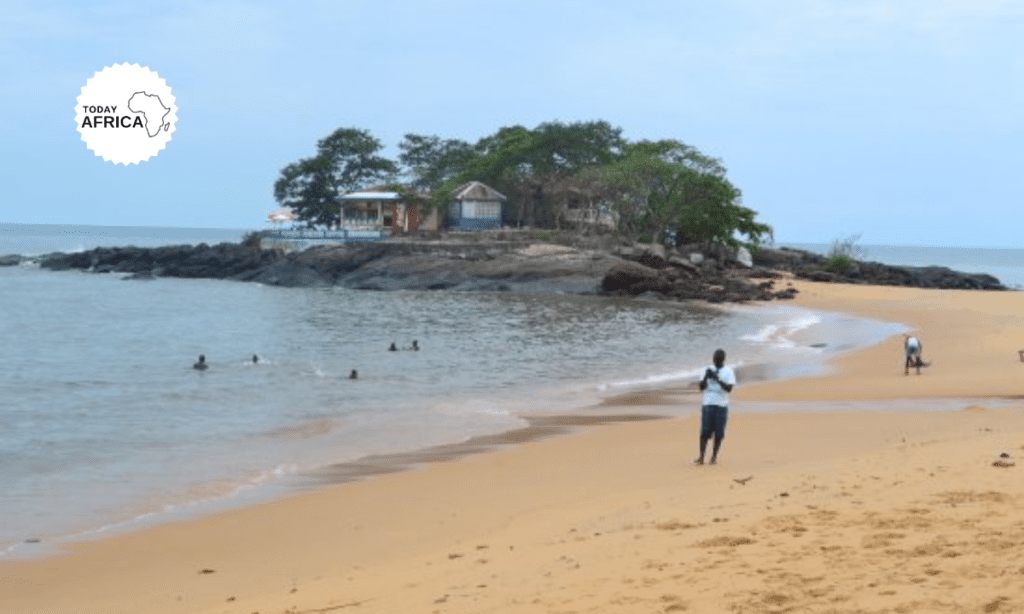
The beach is home to soft golden sand and a handful of beach bars on the northern end, however most of the beach is empty and if you’re searching for a relaxing place to chill out for the day this is a good spot and closer to Freetown.
Lakka’s crowning glory is the lobster. Hands down, this is the best place for lobster. It’s a novelty, really, as if you choose to buy one, it will be directly from the lobster pot in the sea; you’ll see the young lad swim out to grab one for you, grill it and serve it with chips and salad. It costs about $12 and is totally delicious.
Entering the sea can be quite dangerous as the water drops suddenly a meter or so after entering. If you’re not a strong swimmer, be cautious when getting in and out.
7. Grab an ice cream at Gigibonta
One of the newer additions to Lumley Beach is Gigibonta, an Italian cafe restaurant. Although it’s on the opposite side of the road to the actual beach, it’s still a great place to visit.
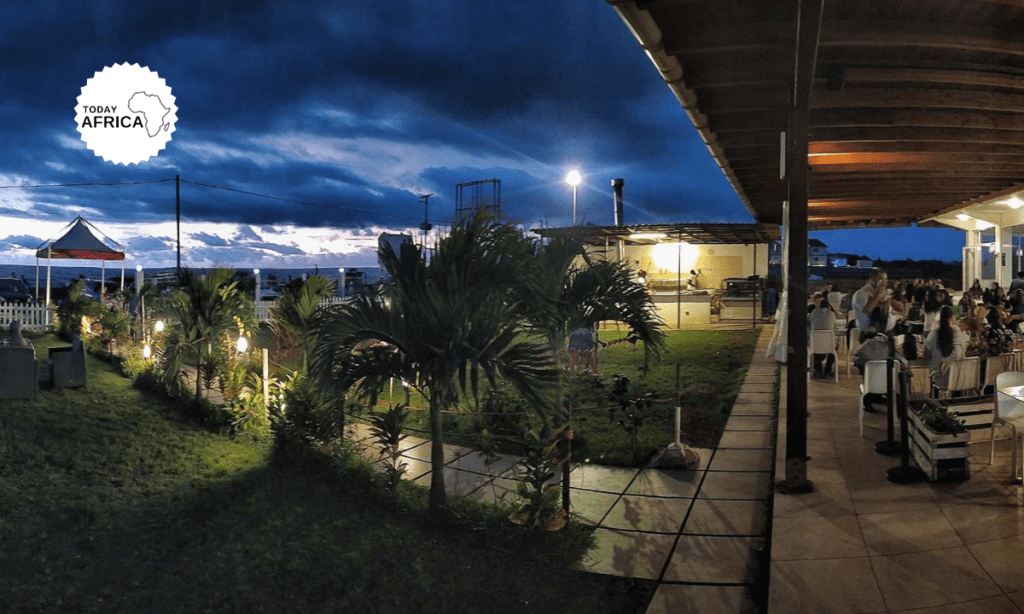
The highlight is the ice cream shop, which serves a variety of delicious flavours, from tangy-sweet bissap (a juice made from the flowers of the Roselle plant) to everyone’s favourite, salted caramel.
In the past, it’s actually been really hard to find fresh ice cream like this in Sierra Leone, so it’s a huge treat and one of the most popular things to do in the evenings. You’ll usually find a queue of people waiting outside for their scoop!
8. Spend 2 nights at the Turtle Islands
We suggest planning a trip to the Turtle Islands. They are a group of stunning tropical islands off the southern coast of Sierra Leone and one of the best places to visit if you want to experience a blissful escape.
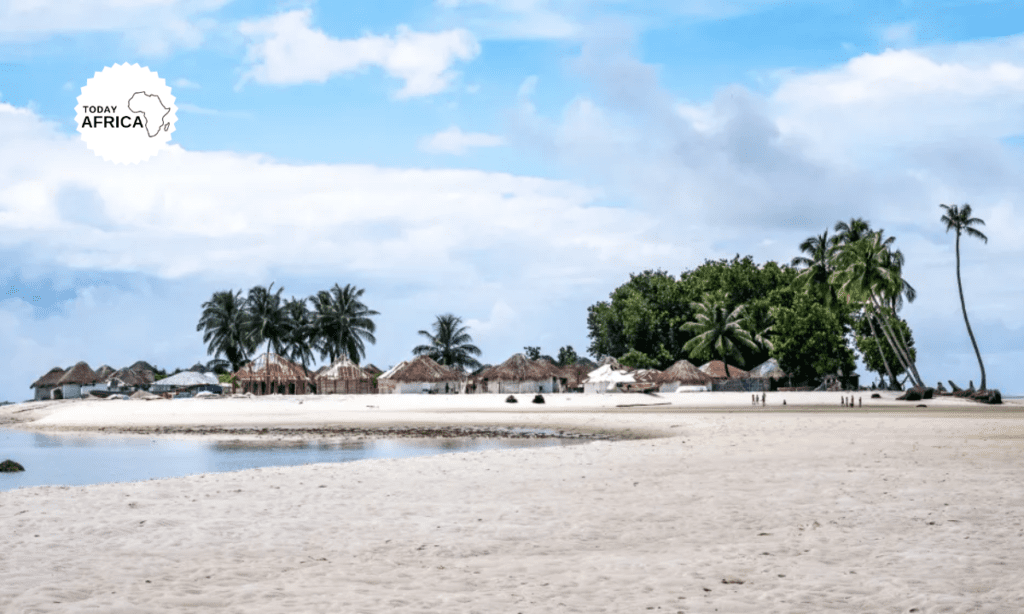
The islands are very remote, and access is very limited. There are no facilities either, so you will have to go with everything you need. You’ll be camping under the stars and digging holes for a toilet; there’s no electricity and no shops.
It’s, therefore, not going to be for everyone, but the sand is soft, the waters are crystal clear, and the serenity of the islands makes it worthwhile.
To reach the islands, your best option is to go through a tour company, although you can make the trip independently; however, it’s not straightforward.
You will drive down from Freetown to Sherbro Island and took a local boat from the village across to one of the islands. However, unless you’re familiar with Salone customs we don’t recommend doing this trip independently. You need to meet with village chiefs and make sure you provide gifts to both the tribe leaders on Sherbro and the islands you visit.
9. Visit the Tiwai Island wildlife sanctuary
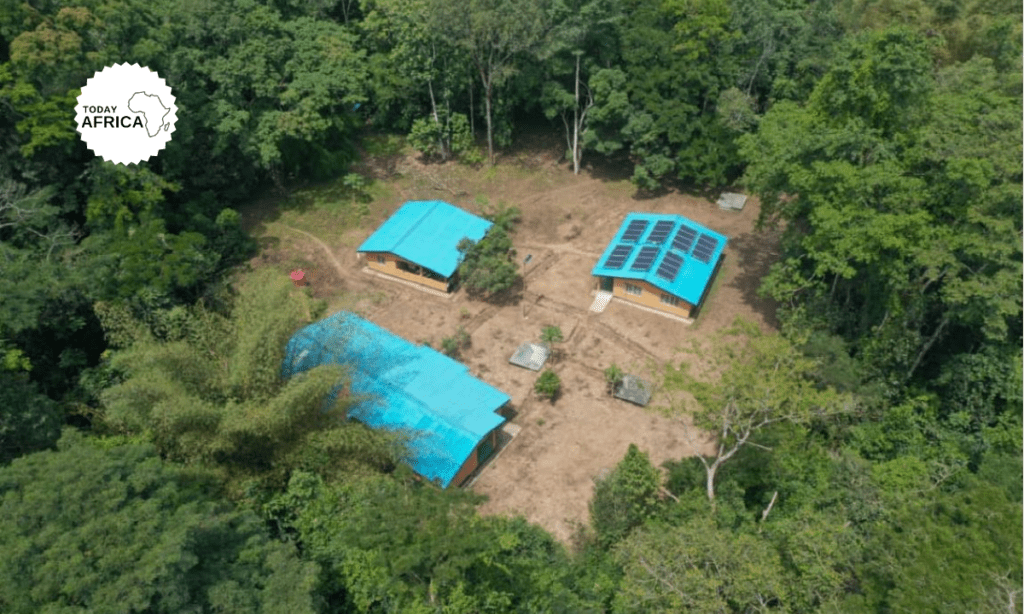
For nature lovers, a visit to Tiwai Island is one of the best things to do in Sierra Leone. The island is in the eastern province and rather remote since it’s nestled in the middle of the Moa River, cut off from the mainland. This has allowed nature to thrive, making it a unique and exciting place to visit, especially for wildlife enthusiasts.
Tiwai Island is uninhabited, apart from a handful of researchers and staff. It’s home to a community-led eco-tourism camp. You’ll be staying in tents or in one of the lodges if you want a little more comfort.
10. Head to Bureh beach
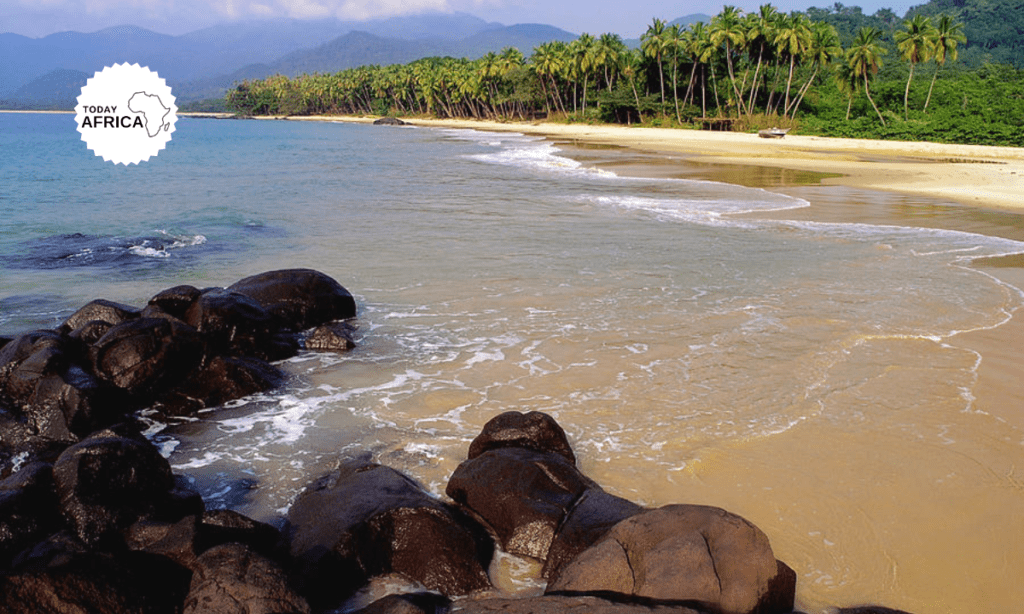
Bureh Beach is another fantastic beach located near the southern end of the Freetown peninsula. It’s quite close to Kent Beach, where you catch the boat to the Banana Islands. The beach is brilliant, and if you can, I suggest combining these two attractions on your itinerary for the ultimate trip!
On Bureh Beach, expect to find small local restaurants dotted along the otherwise palm-fringed beachfront and fewer crowds; since it’s further away from Freetown, it’s less busy. This is also a top spot for surfing if you want to give it a go.
Sierra Leone has some epic beaches, and you might find yourself on a beach-hopping extravaganza. If this sounds like something you might enjoy, check out Tokeh Beach too.
11. Climb Tingi Hills
Located in the Tingi Hills Forest Reserve is the second highest mountain in Sierra Leone, Sankan Biriwa. Standing 6,070 feet above sea level, the mountain is completely surrounded by dense jungle and is a hard fought two-day hike from the nearest village, Kenewa.
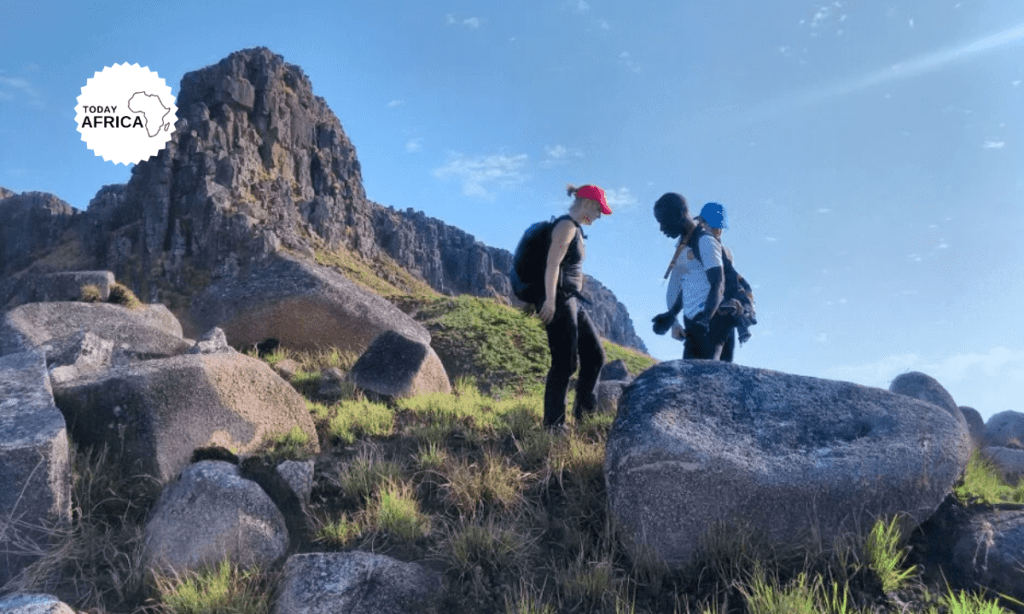
A few groups outside the locals has attempted to climb this hill, where one member of the party fell to their death. As legend is told, after the Devil appeared claiming to hold the secret to reaching the summit, the man chased the devil off of the side of the mountain to his death.
The man is still buried at the base of the mountain, and a glass bottle, some 90 years old, remains at the top of the mountain as a place to leave an offering to his spirit.
12. Mountain bike the timber trails
If you travel North towards the border with Guinea, you end up in the middle of hundreds of miles of rolling hills and pretty much beyond the reach of any central authority.
The local timber is quite valuable and villagers will venture deep into the forests to find the right trees. Then they’ll hack a path through the undergrowth to allow old 4x4s to come pickup the wood.
If you’ve hiked in Africa before, you should know Africans don’t do switchbacks. So, choose the shortest possible route regardless of how insanely gnarly the terrain is.
There are hundreds of miles of these timber trails, plus many more miles of winding single track access roads, and they are ridiculously fun on a mountain bike. At night, camp in tiny villages of cattle herders and fishermen and eat delicious smoked crocodile and grilled bushmeat.
13. Go wild in Freetown
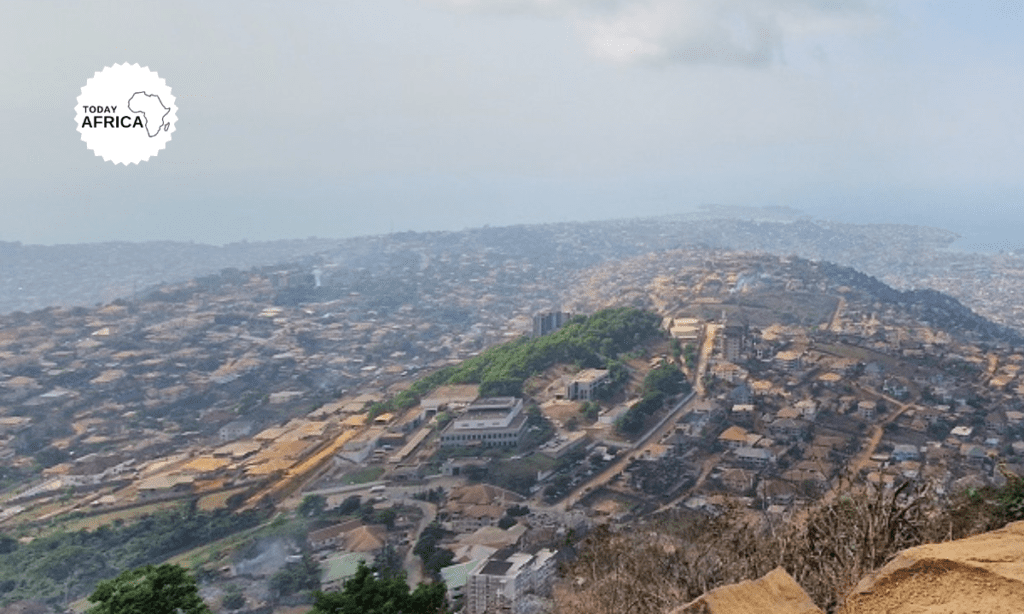
Though it’s nominally Muslim, Freetown is a hedonist’s paradise. Every year, thousands of diaspora return home for Christmas, and the city effectively shuts down for a month of partying.
Fruit markets and side-alleys give way to all night street carnivals with dancing devils and nightly beauty pageants. Huge colonial houses become playboy mansions and people skip work on Monday morning for flashy pool parties. People take to the beach armed with Afrobeat-blasting sound systems and heinous amounts of BBQ chicken and jollof rice.
There is a short interlude for New Year, which most of the country spends in church, but by and large the festivities continue throughout the year. Sierra Leone is not a place for moderation.
Conclusion
There are tons of fun activities in Sierra Leone. And it’s honestly one of the most interesting places to visit in Africa if you’re in search of a unique culture and an off-the-beaten-path destination.
The people are friendly, welcoming and always ready to help. If you’re planning on visiting, We’re sure you’ll have a great time, but make sure you’re cautious and never leave valuables lying around. It’s a safe country, but things tend to go missing.
Overall, Sierra Leone is a fun and beautiful country bound to leave the most unique and magical memories.
References:

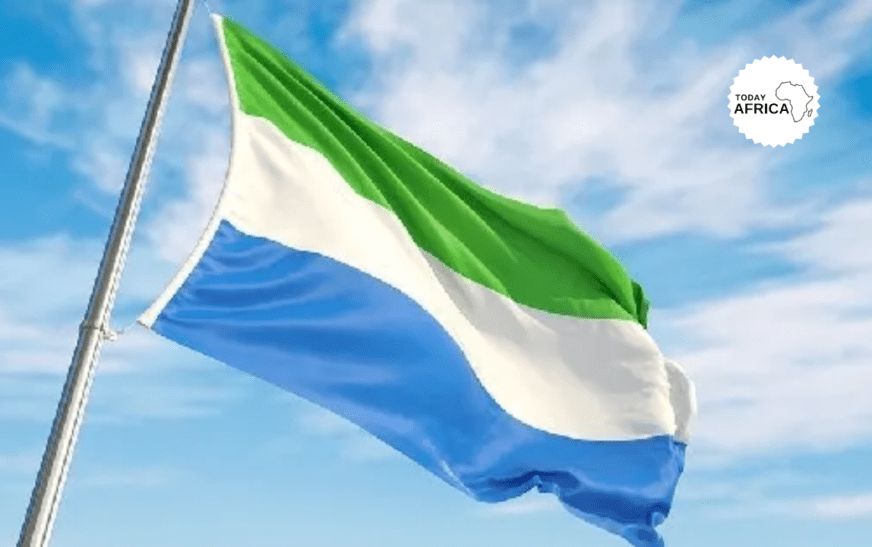





![15 Best Beaches in Morocco to See This Year [& Essential Packing List]](https://todayafrica.co/wp-content/uploads/2023/12/Blue-Simple-Dad-Appreciation-Facebook-Post-1200-×-720-px-6-9.png)
